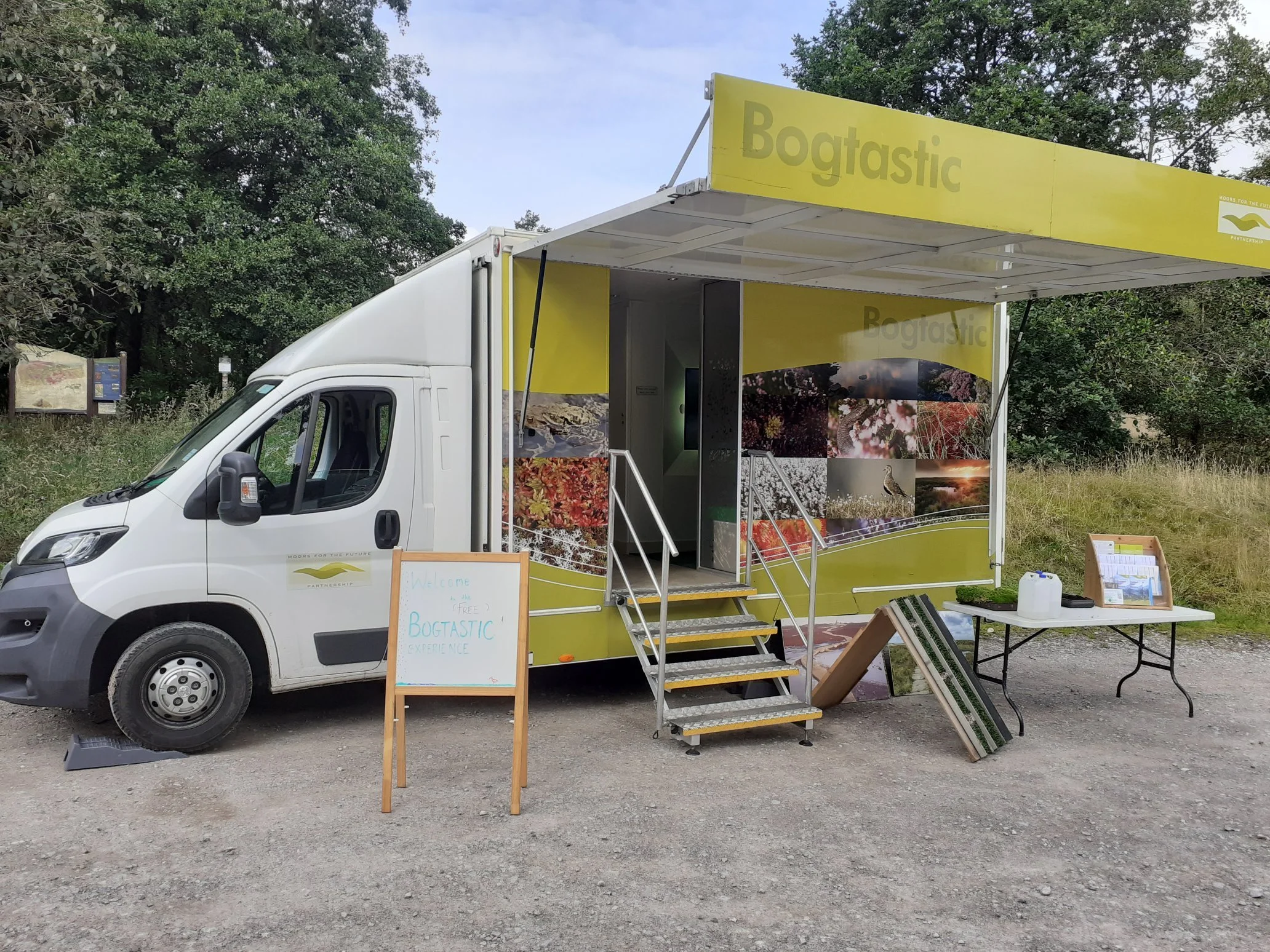Restoring moorlands and peat bogs
‘Wet’ blanket bog. Moors for the Future.
Across the UK, blanket bogs have accumulated for over 6,000 years, and in places are over six meters deep.
Globally, they are rarer than rainforests and are both a vital carbon sink, and provide a vital climate service by acting as a sponge for rainfall and water storage.
Our upland moors and peatbogs above Manchester are the source of considerable volumes of the water that flows through the city’s rivers and waterways.
Importance of upland moors and peat bogs
Over several centuries our peatlands have been degraded by pollution and drainage schemes, losing much of their capacity to soak up water and to slow its flow through the upper reaches of river catchments.
But in recent years, work has been undertaken to improve the quality of our moorlands, not only assisting with flood risk management, but contributing to climate mitigation, biodiversity and water quality.
Moors for the Future
The Moors for the Future Partnership was founded in 2003 to deliver a landscape scale programme of blanket bog restoration across the Peak District and South Pennine moors.
In 20 years, the Partnership has regenerated over 35 sq km of degraded peat, one of the most threatened and most important landscapes in the world.
Holcombe Moor Moorland Project
Holcombe Moor is a plateau of moorland above Bury, Greater Manchester, owned by the National Trust. It has recently been restored, storing water that would otherwise rapidly flow into the urban areas below.
Permeable dams have been created by moving stones into gullies to restrict the flow of flood water and 3,500 peat bunds have constructed to hold back water and reducing the flow of water across the moorland.
The project has also seen the planting of over half a million sphagnum moss plants in wet areas. Sphagnum essentially acts as a sponge, holding up to 20 times its weight in water. Together, this work is, helping restore the landscape and, by extension, its capacity to store carbon and retain moisture.
The project was funded by Defra and the Environment Agency, and was delivered by Moors for the Future Partnership (as part of their ‘Moor Carbon’ project), Holcombe Moor Commoners’ Association, the National Trust and Natural England.
““...the upland landscape needs to be in the best ecological condition to withstand the shocks and stresses of a changing climate in order to deliver positive benefits for the downhill, downstream and downwind communities in places such as Manchester.””
Wooden gulley block. Moors for the Future.
The Bogtastic Van
The Moors for the Future ‘Bogtastic van’ is the world’s first bog in a van!
The van has artwork, sound and a spongey floor to simulate the experience of being on moorland.
The van visits towns and popular countryside places for people to experience the sights, sounds and sensations of our local uplands.
Moors for the Future Partnership staff use the van to take important conservation messages to the wider population, encouraging people to look after the moors.
Find out more about the Bogtastic van on the Moors for the Future Partnership website, and on social media on Facebook, Twitter and Instagram at @Moorsforfuture
Further information
Work by Moors for the Future to help manage flood risk: https://www.moorsforthefuture.org.uk/our-purpose/reducing-the-risk-of-flooding
Moors for the Future Youtube channel: www.youtube.com/channel/UC6du6IxAUxoKT5bhzxqIwXQ
City of Trees Come Explore Crompton Moor: https://www.cityoftrees.org.uk/sites/default/files/CromptonA5Leaf1018LoRes.pdf



